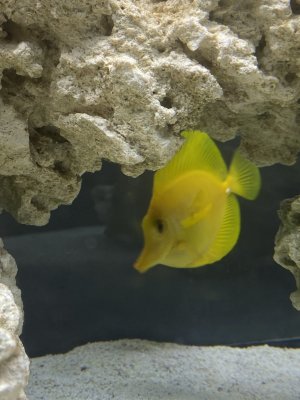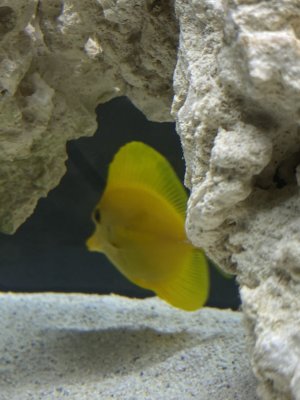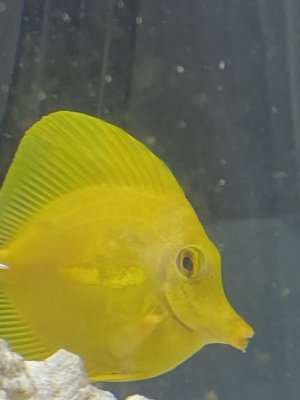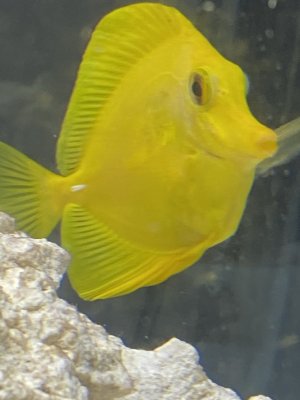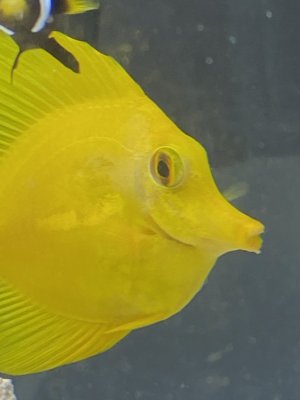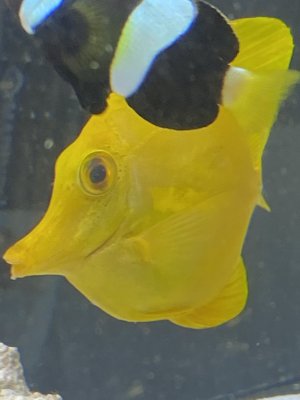Navigation
Install the app
How to install the app on iOS
Follow along with the video below to see how to install our site as a web app on your home screen.
Note: This feature may not be available in some browsers.
More options
You are using an out of date browser. It may not display this or other websites correctly.
You should upgrade or use an alternative browser.
You should upgrade or use an alternative browser.
Yellow Tang Black Patches
- EMERGENCY
- Thread starter Drdisrespect
- Start date
-
- Tags
- disease fish saltwater yellow tang
- Tagged users None
Brew12
Electrical Gru
View BadgesExcellence Award
Reef Tank 365
Article Contributor
Moderator Emeritus
North Alabama Reef Club
Article Administrator
My Tank Thread
The scratching behavior would lead me to believe that it could have flukes. If you can catch it, a fresh water dip would confirm it.
I believe the dark patches are a stress response.
How long have you had the tang? When did you add the last fish to this tank? I see a skin tag on its lower jaw that isn't normal, probably from scratching, as is the discoloration on its flanks. Asd Bru12 mentioned, it could be skin flukes.
Jay
@Brew12 what should i do ? dip it in freshwater? @Jay Hemdal 1 month ago, What treatment should i do ?
The timing is about right for a fluke infestation to develop (4 to 8 weeks). If you can catch this fish, you could try a five minute FW dip, not so much as a full treatment, but to confirm if it has flukes, and to buy you some time.
“Freshwater dips” are commonly used to dislodge parasites from the skin of marine fishes. To perform these dips, the fish is placed in a dimly lit / covered container of freshwater the same temperature as the exhibit for 5 minutes, observing it closely for overt signs of stress. The idea is to dislodge the parasites, without unduly harming the fish. Many aquarists opt to use reverse osmosis water, and adjust the pH to match the aquarium, but this is not necessary. After the dip is finished, return the fish to the tank and let the dip water settle. If you have a magnifying glass (or better yet, a cheap microscope) look at anything on the bottom of the dip container for anything that can be identified as flukes. After the fish has recovered for 24 hours, if the symptoms improve, you can pretty much conclude that it has flukes or other metazoan parasite. Then, you should consider treating with praziquantel.
Jay
“Freshwater dips” are commonly used to dislodge parasites from the skin of marine fishes. To perform these dips, the fish is placed in a dimly lit / covered container of freshwater the same temperature as the exhibit for 5 minutes, observing it closely for overt signs of stress. The idea is to dislodge the parasites, without unduly harming the fish. Many aquarists opt to use reverse osmosis water, and adjust the pH to match the aquarium, but this is not necessary. After the dip is finished, return the fish to the tank and let the dip water settle. If you have a magnifying glass (or better yet, a cheap microscope) look at anything on the bottom of the dip container for anything that can be identified as flukes. After the fish has recovered for 24 hours, if the symptoms improve, you can pretty much conclude that it has flukes or other metazoan parasite. Then, you should consider treating with praziquantel.
Jay
@Jay Hemdal Thank you, First need to catch this fish lol, I will do that today and keep you posted.
@Jay Hemdal No more black patch it went away after fresh water dip, Another question i cleaned my canister filter with saltwater but now its i see white dust coming out from my canister. Any help ?
Similar threads
- Replies
- 2
- Views
- 91
- Replies
- 6
- Views
- 180
- Replies
- 8
- Views
- 320
- Replies
- 4
- Views
- 124
New Posts
-
Florida Lighting LED Drygoods Maxspect RazorX 100watt LED $300
- Latest: reefiniteasy
-



